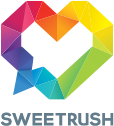
Navigating Change Within Your Organization
Change: It is indeed a constant and, for most people, a constant source of pain. But with the right learning approach, we can ensure that our learning enables change and help our people adapt more quickly to changes at work.
One of the reasons that change is so hard for folks is that there are actually three different kinds of change, each with its own characteristics and requirements to be successfully navigated.
#1. Change To A Procedure Or Process
A process or procedure has changed and you would like your learners to use the new process rather than the old one. Seems simple enough — just tell them that something’s changed and done. Oh, if only that were enough!
What Gets In The Way Of Successful Change?
The biggest barrier to successful process change is that the learning environment is rarely to never where folks are going to actually do what they are learning about. Lack of situational context is your enemy. So even if your learners are paying close attention to your training, when they get back to their desk, they may not be able to identify the triggers for using the new process or procedure, or be able to apply it in their particular situation.
How Can Your Learning Support Adoption?
When you do your audience analysis, be sure to carefully examine the learner’s context and environment. Try to make your learning simulate that context and environment as closely as possible. A simulation or a VR or AR scenario could be very effective here. But here’s a simpler way to achieve your goal: Don’t ask them to remember it at all. Instead, create an SOP or a job aid that the person can easily find at the point of need. What we are doing here is looking for a frictionless way for your learner to get their hands on the correct information at the right time! This might show up as a QR code on the wall next to a piece of equipment, or a link to a thoughtfully named document in your knowledge hub. Whatever it is, it needs to be in the place the learner expects it to be, and it needs to be named what the learner is asking to know.
#2. Habit Changes
Sometimes we want our learners to do the same thing, in the same way, regularly — in other words, a habit. A habit is an association between a context cue (yes, context again!) and a response that develops over time.
What Gets In The Way Of Successful Habit Development?
Habits are hard to establish at work for two reasons. First, you may have heard that it takes 30 days or something similar to establish a new habit. The truth is it varies by individual, but it will be more time than a 20-minute eLearning module.
Second, habits require a lack of friction. If that apple in the crisper has to be found, washed, and cut up, you will likely just grab the package of peanut butter cups on the counter.
What Can You Do To Support Habit Development?
To get in the repetitions necessary for habit change, use some post-session support. Think email (or better yet text) nudges. “Have you entered your time today?” Artifacts or physical takeaways that reflect the habit being trained that can sit in plain sight on the learner’s desk are another option. And make doing the new habit as frictionless as possible. For example, people are less likely to enter their time if they have to chase someone down to have the appropriate task to post it to. Work with your operations to reduce any friction. Grease the rails and your learners will slide into the new habit.
#3. Mental Models Or Worldview Changes
Imagine this: You have a new employee, and you want them to internalize and embody all the values and worldviews of their new company. It is impossible to teach them how to exactly respond in every situation that might come up, right? But if their head and heart are in the right place, grounded in your values and mission, then they will do the right thing. Easy, right? Wrong!
What Gets In The Way Of Mental Model Shifts?
The biggest thing that works against us is our OWN mental models about learning! Simply telling someone what they need to do absolutely will not work. Think about that family member who stubbornly refuses to change their point of view, despite your well-crafted argument. Explaining just won’t work for this kind of change.
What Can You Do To Support Mental Model Change?
To change a mental model, the learner needs an experience plus the opportunity to reflect. It turns out that a well-crafted story can be just the thing when it comes to changing a person’s mental model. If they can identify with the characters, it is almost as good as living through the situation themselves. Storytelling can help your learners develop empathy for people different from themselves in a way simply telling them to be empathetic just won’t. And storytelling doesn’t have to be some high-end, high-production-value video. Remember that for millenia, our ancestors gathered around to hear cautionary tales that started “Once upon a time…” Don’t forget the reflection bit. Giving folks an opportunity to self-reflect with guided questions after the experience, or reflect as part of a discussion group, is the magic that transforms.
Key Takeaways
- Increase adoption of change processes and procedures by remembering to establish context.
- Change habits by reducing friction and adding repetition.
- Use storytelling and reflection to change mental models.
Download the L&D And Learner Experience 2024 Trends Report today to delve into the findings and discover how you can leverage the latest technologies and strategies to enhance your training program and encourage meaningful change.
